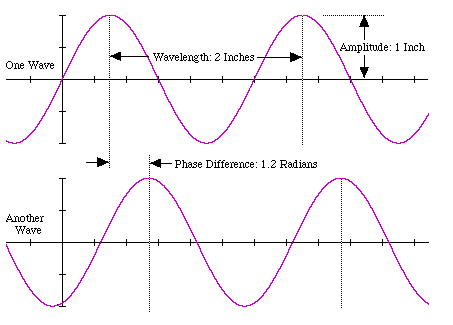
A SAR works by illuminating the Earth with a beam of coherent (like a laser) microwave radiation. This radiation can be thought of as a wave, like a water wave or a sound wave.
As you may remember from trigonometry or physics class, a wave can be described by just three properties: its wavelength, amplitude, and phase.

If two waves are not shifted with respect to one another, they oscilate together and we might say they are "in phase", or have a phase shift of 0 degrees. However, if two waves are oriented oppositely, so one wave is at a crest while the other is at a trough, we say they are "out of phase", or have a phase shift of 180 degrees.
In SAR, the phase of the echoing signal is compared to a reference wave, so what we call the phase of a SAR image is actually the phase difference between the echo and this reference.
Sadly, since the wavelength of most SARs is under 1 meter, and the distance between pixels is several meters, so looking at the phase of a single SAR image tells you nothing. In fact, the only useful thing you can do with a SAR image's phase is to subtract it from another SAR image's phase. Doing this results in an interferogram.
Back to interferometry main page
Last Updated: September 1, 1998
If you have any questions, please feel free to email olawlor@acm.org